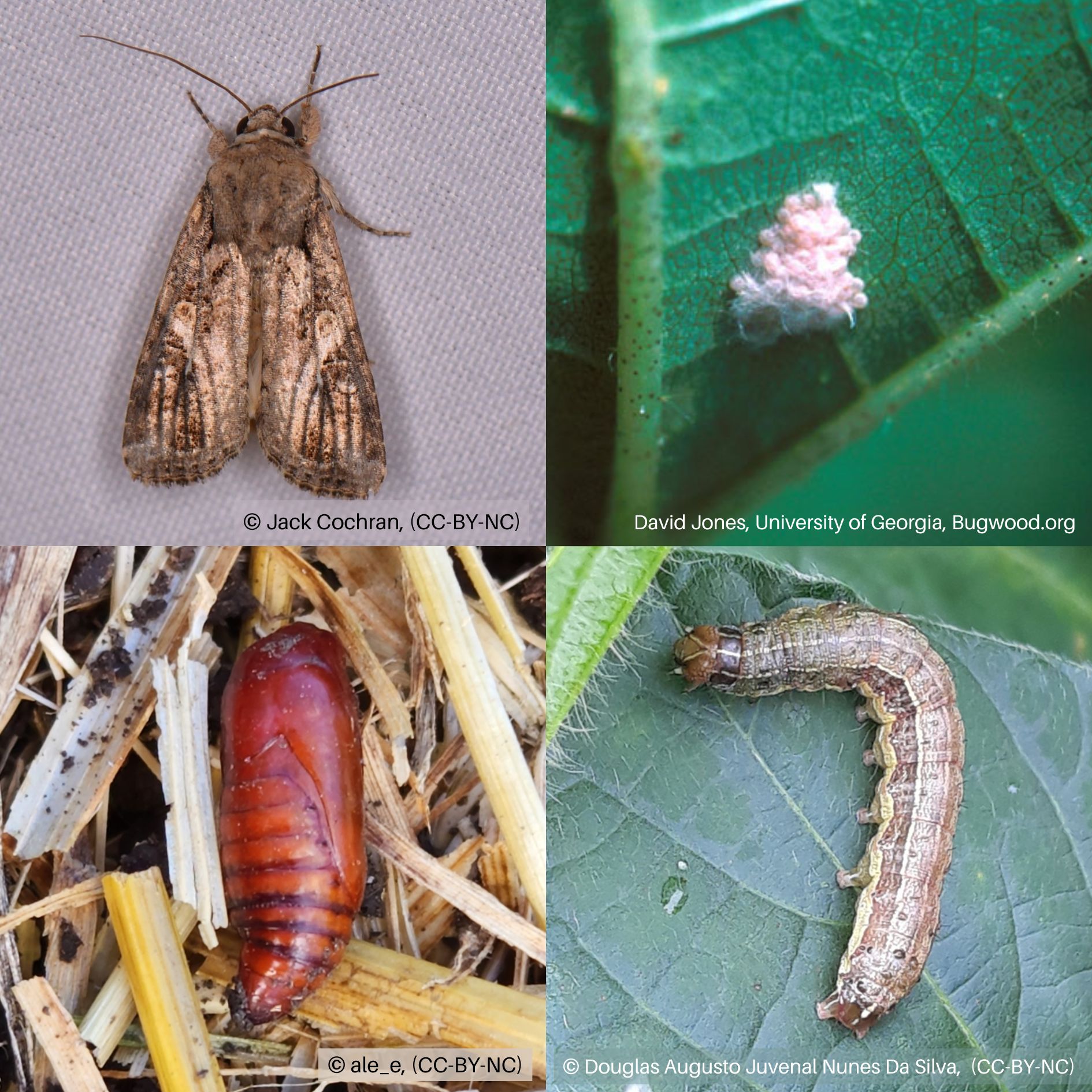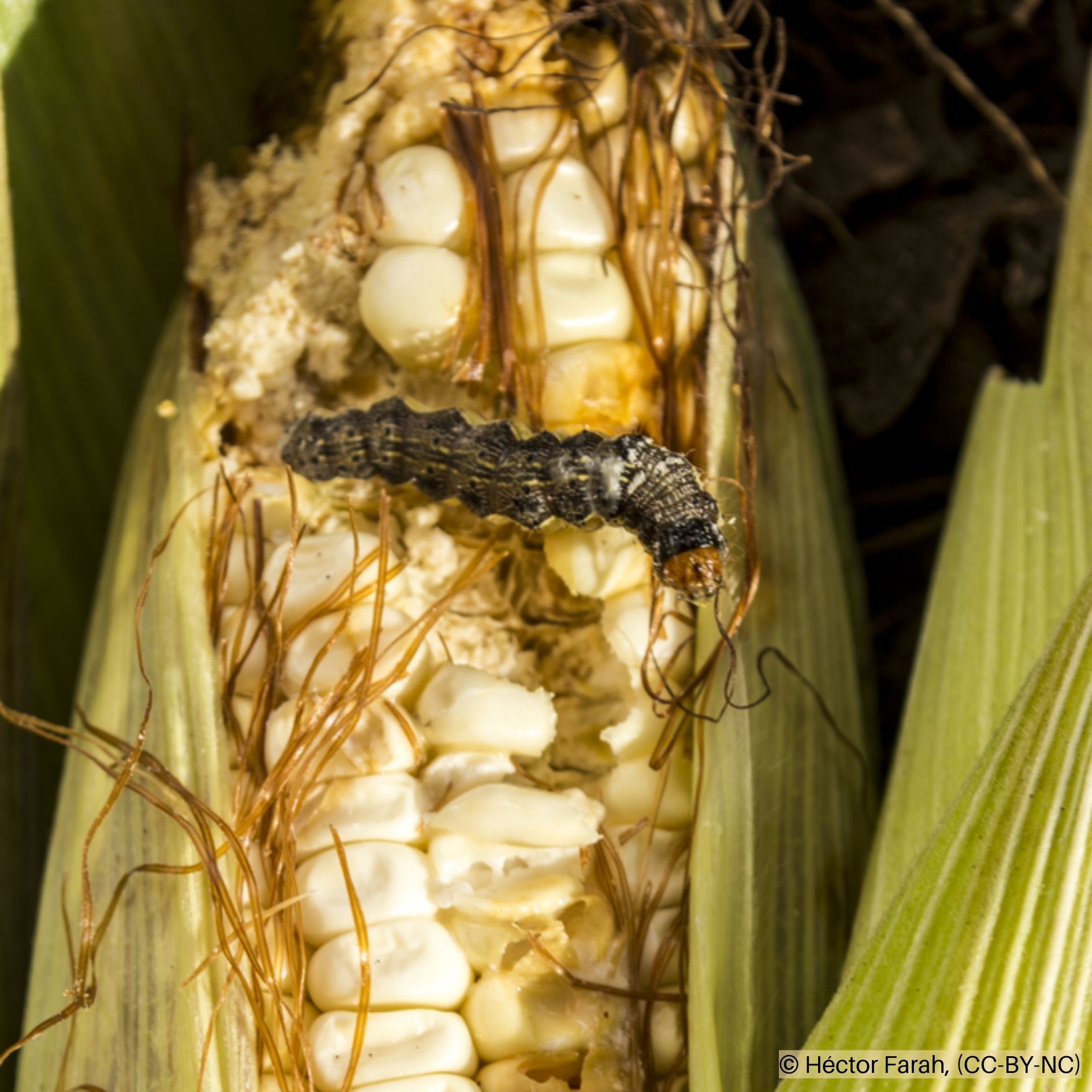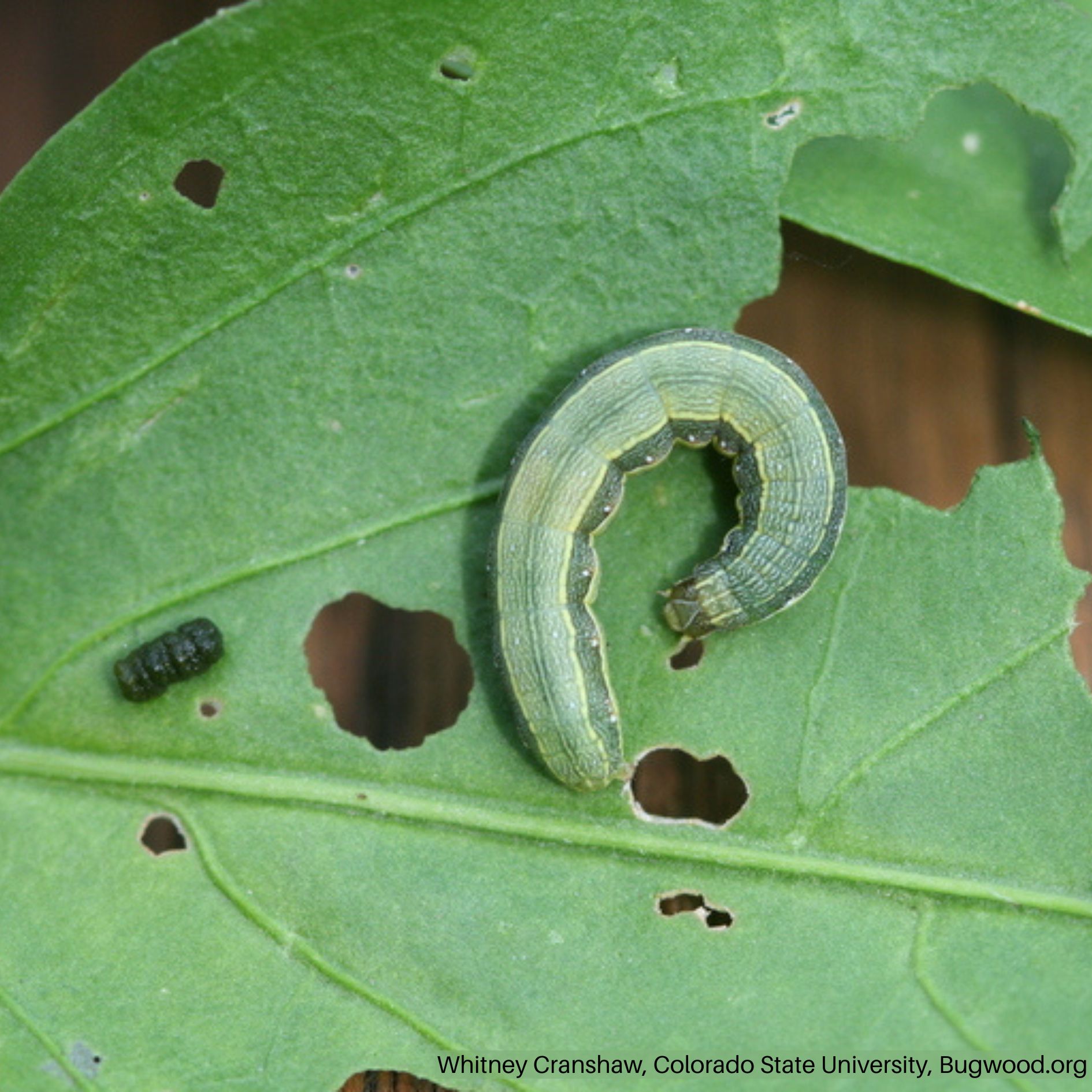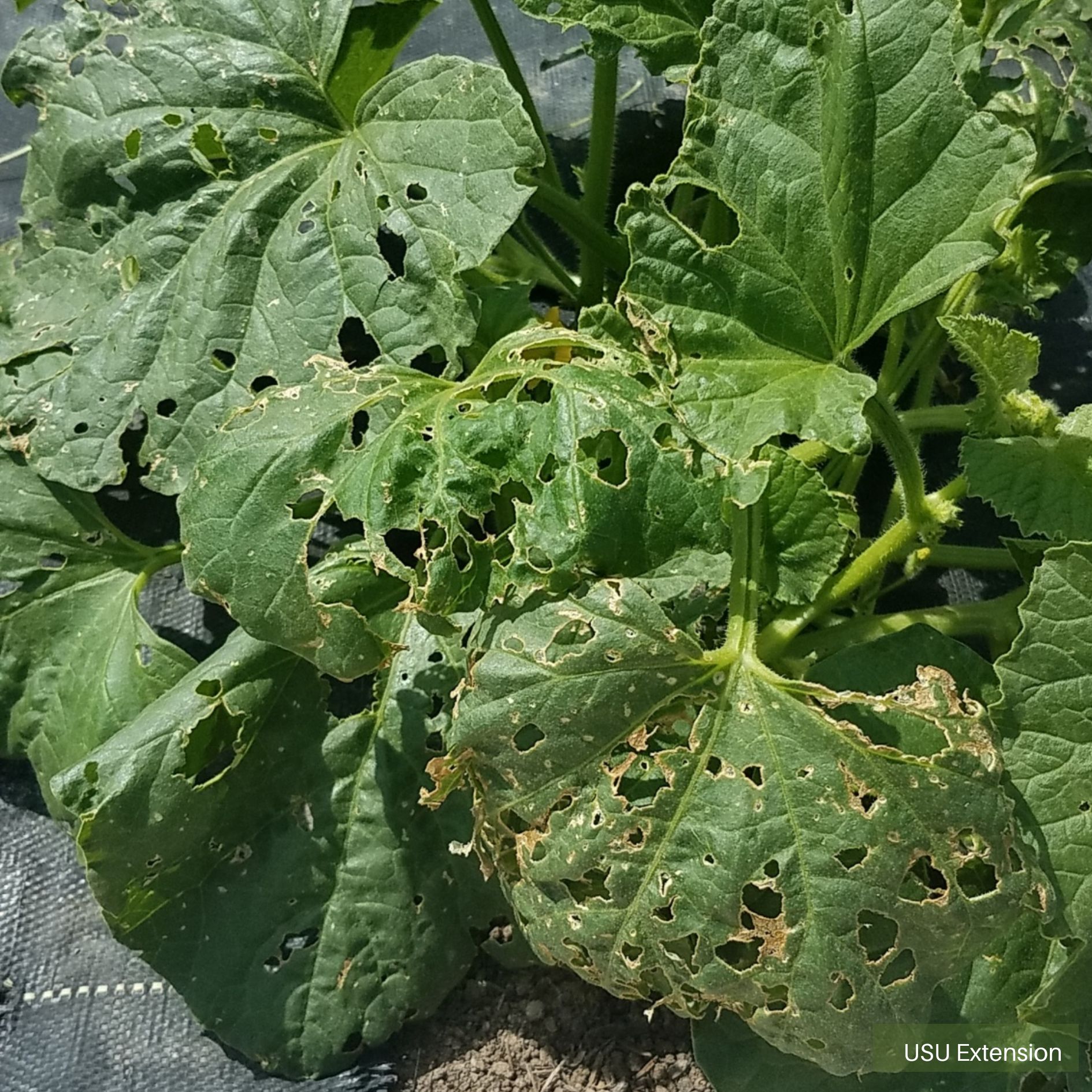Armyworms on Vegetables
 Fall Armyworm (Spodoptera frugiperda) Life Stages
Fall Armyworm (Spodoptera frugiperda) Life Stages Fall Armyworm (Spodoptera frugiperda) Feeding on Corn
Fall Armyworm (Spodoptera frugiperda) Feeding on Corn Beet Armyworm (Spodoptera exigua) and Feeding Damage
Beet Armyworm (Spodoptera exigua) and Feeding Damage Armyworm Feeding Damage
Armyworm Feeding DamageHOSTS
- Asparagus
- Brassicas
- Cucurbits
- Corn
- Leafy Greens
- Legumes
- Onions
- Potato
- Solanaceae Crops
- Root Crops
OVERVIEW
Armyworms can be found all over the United States, with various species found in Utah. These insects belong to a large group of night-flying moths in the family Noctuidae. Armyworms can cause severe damage during outbreak period.
Examples of common armyworm species found in Utah include:
- Beet Armyworm (Spodoptera exigua)
- Bertha Armyworm (Mamestra configurata)
- Fall Armyworm (Spodoptera frugiperda)
- Western Yellowstriped Armyworm (Spodoptera praefica)
DESCRIPTION
Adults are mottled gray and brown moths with light-colored markings. Depending on the species, larvae vary in color from tan, green, and almost black.
BIOLOGY
Egg | Larva (6-9 stages) | Pupa | Adult (moth)
- 1-3 generations per growing season.
- Overwinter as pupae in the soil.
Armyworms are primarily a concern mid-July through September.
SYMPTOMS
Larvae feed on leaves with chewing mouthparts, causing skeletonized foliage, irregular holes, shredded leaves, or defoliation. Larvae may tunnel into corn ears, bore into the head of leafy vegetables, and chew into stems, flower buds, and sometimes upper plant roots.
SCOUTING
- Monitor adults (fall and beet armyworms) with pheromone traps, starting in June.
- Eggs are found on leaves of crops or weeds.
- Young larvae are found near the egg mass, or in groups on host plants.
- Maturing larvae disperse and move towards the center of the plant, or may be seen in the soil.
Corn may be regularly attacked while other vegetables are only occasionally attacked depending on the armyworm species and host plant. In dense, crowded populations, armyworms migrate and may completely defoliate crops.
GENERAL MANAGEMENT
Consider management for corn seedlings, if 25% of plants show damage and live larvae are still present.
- Keep crop area weed-free (especially grassy weeds).
- Thoroughly till crop residues and control weeds to reduce armyworm overwintering and feeding sites. Fall tillage can also help destroy or expose overwintering pupae.
- Many predators, parasites, and diseases attack armyworms, but because armyworms dwell beneath the soil surface, few of these natural enemies are effective in controlling their populations.
INSECTICIDES
- Organic insecticide options include those with active ingredients such as Bacillus thuringiensis (Bt), spinosad, pyrethrins, and horticultural oils.
- Synthetic insecticide options include those with active ingredients such as zeta-cypermethrin, permethrin, lambda-cyhalothrin, esfenvalerate, deltamethrin, cyfluthrin, bifenthrin, and carbaryl.

